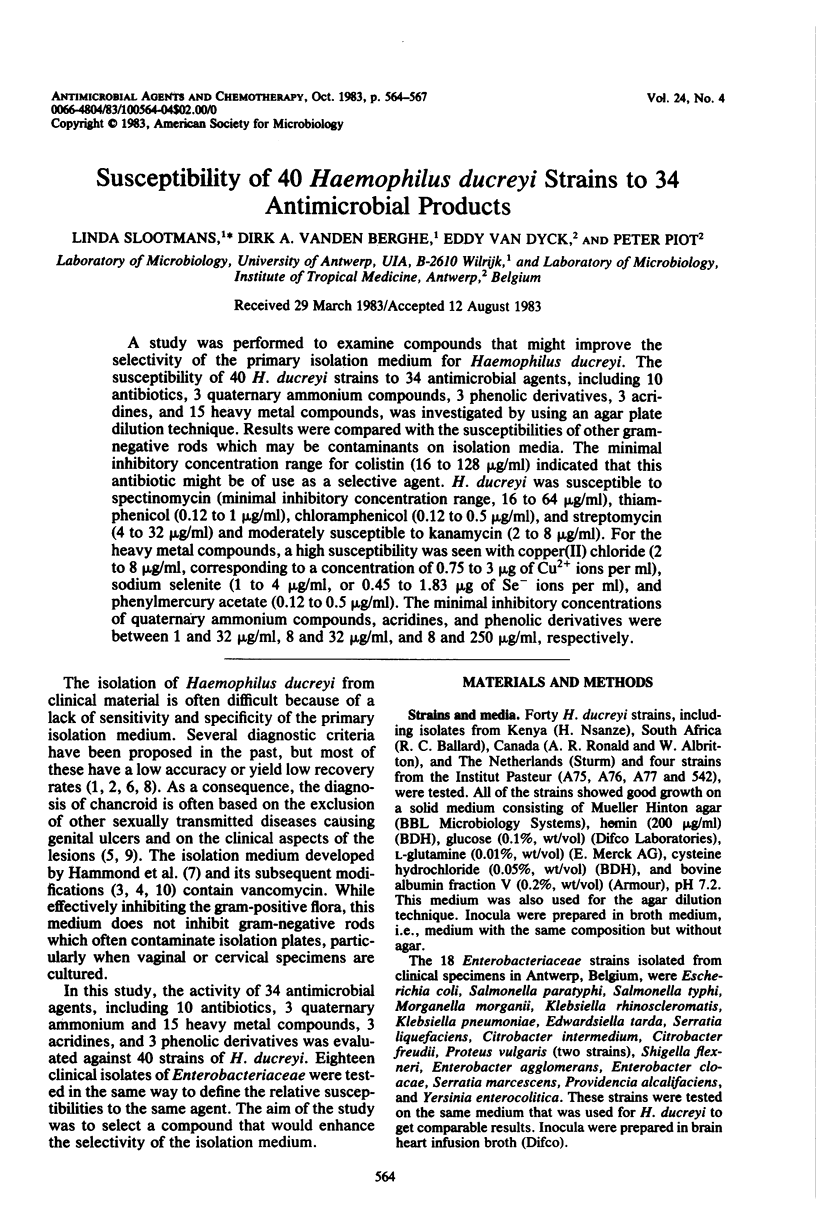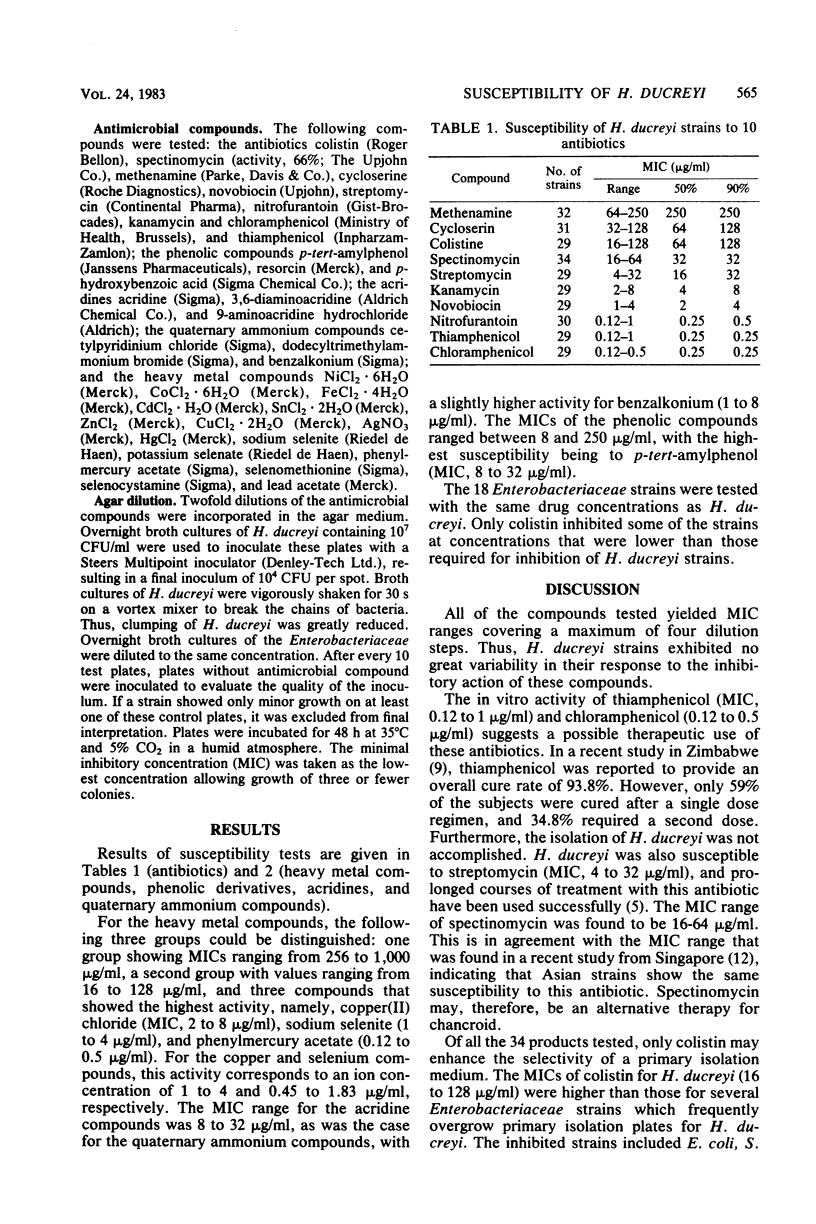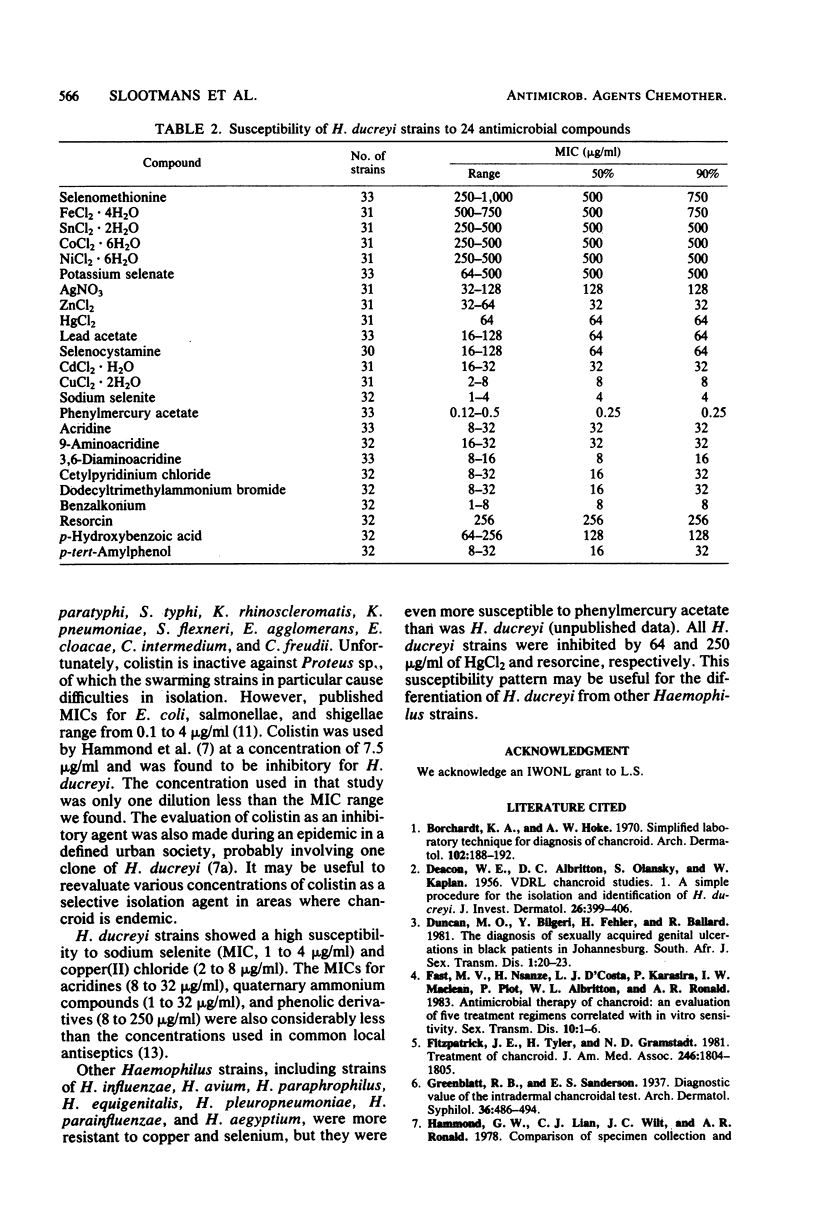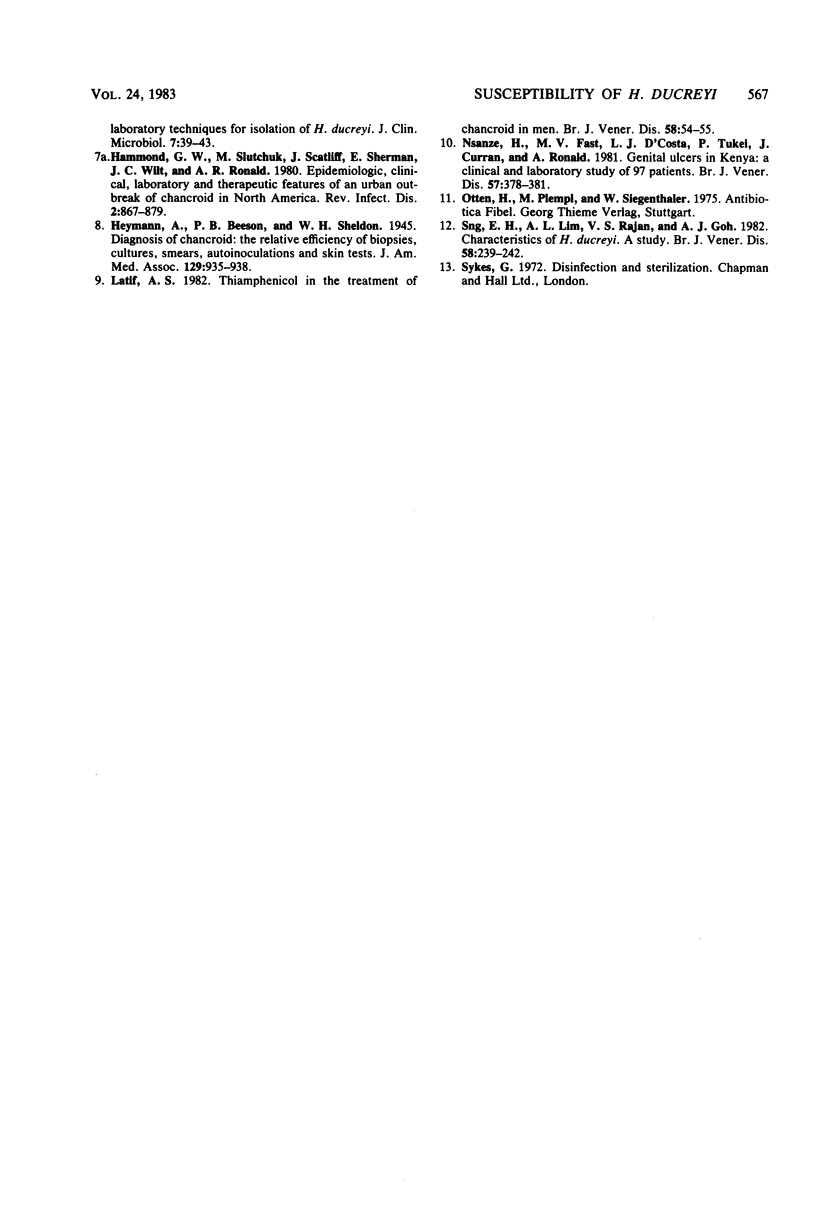Abstract
A study was performed to examine compounds that might improve the selectivity of the primary isolation medium for Haemophilus ducreyi. The susceptibility of 40 H. ducreyi strains to 34 antimicrobial agents, including 10 antibiotics, 3 quaternary ammonium compounds, 3 phenolic derivatives, 3 acridines, and 15 heavy metal compounds, was investigated by using an agar plate dilution technique. Results were compared with the susceptibilities of other gram-negative rods which may be contaminants on isolation media. The minimal inhibitory concentration range for colistin (16 to 128 micrograms/ml) indicated that this antibiotic might be of use as a selective agent. H. ducreyi was susceptible to spectinomycin (minimal inhibitory concentration range, 16 to 64 micrograms/ml), thiamphenicol (0.12 to 1 microgram/ml), chloramphenicol (0.12 to 0.5 micrograms/ml), and streptomycin (4 to 32 micrograms/ml) and moderately susceptible to kanamycin (2 to 8 micrograms/ml). For the heavy metal compounds, a high susceptibility was seen with copper(II) chloride (2 to 8 micrograms/ml, corresponding to a concentration of 0.75 to 3 micrograms of Cu2+ ions per ml), sodium selenite (1 to 4 micrograms/ml, or 0.45 to 1.83 micrograms of Se- ions per ml), and phenylmercury acetate (0.12 to 0.5 micrograms/ml). The minimal inhibitory concentrations of quaternary ammonium compounds, acridines, and phenolic derivatives were between 1 and 32 micrograms/ml, 8 and 32 micrograms/ml, and 8 and 250 micrograms/ml, respectively.
Full text
PDF



Selected References
These references are in PubMed. This may not be the complete list of references from this article.
- Borchardt K. A., Hoke A. W. Simplified laboratory technique for diagnosis of chancroid. Arch Dermatol. 1970 Aug;102(2):188–192. [PubMed] [Google Scholar]
- DEACON W. E., ALBRITTON D. C., OLANSKY S., KAPLAN W. V.D.R.L. chancroid studies. I. A simple procedure for the isolation and identification of Hemophilus ducreyi. J Invest Dermatol. 1956 May;26(5):399–406. doi: 10.1038/jid.1956.51. [DOI] [PubMed] [Google Scholar]
- Fast M. V., Nsanze H., D'Costa L. J., Karasira P., Maclean I. W., Piot P., Albritton W. L., Ronald A. R. Antimicrobial therapy of chancroid: an evaluation of five treatment regimens correlated with in vitro sensitivity. Sex Transm Dis. 1983 Jan-Mar;10(1):1–6. [PubMed] [Google Scholar]
- Fitzpatrick J. E., Tyler H., Jr, Gramstad N. D. Treatment of chancroid. Comparison of sulfamethoxazole-trimethoprim with recommended therapies. JAMA. 1981 Oct 16;246(16):1804–1805. doi: 10.1001/jama.246.16.1804. [DOI] [PubMed] [Google Scholar]
- Hammond G. W., Slutchuk M., Scatliff J., Sherman E., Wilt J. C., Ronald A. R. Epidemiologic, clinical, laboratory, and therapeutic features of an urban outbreak of chancroid in North America. Rev Infect Dis. 1980 Nov-Dec;2(6):867–879. doi: 10.1093/clinids/2.6.867. [DOI] [PubMed] [Google Scholar]
- Latif A. S. Thiamphenicol in the treatment of chancroid in men. Br J Vener Dis. 1982 Feb;58(1):54–55. doi: 10.1136/sti.58.1.54. [DOI] [PMC free article] [PubMed] [Google Scholar]
- Nsanze H., Fast M. V., D'Costa L. J., Tukei P., Curran J., Ronald A. Genital ulcers in Kenya. Clinical and laboratory study. Br J Vener Dis. 1981 Dec;57(6):378–381. doi: 10.1136/sti.57.6.378. [DOI] [PMC free article] [PubMed] [Google Scholar]
- Sng E. H., Lim A. L., Rajan V. S., Goh A. J. Characteristics of Haemophilus ducreyi. A study. Br J Vener Dis. 1982 Aug;58(4):239–242. doi: 10.1136/sti.58.4.239. [DOI] [PMC free article] [PubMed] [Google Scholar]


